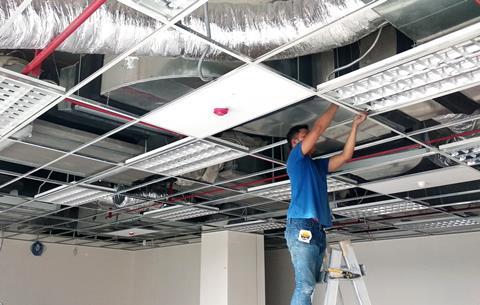Joiners, electricians and fit-out specialists among skills most sought after
Construction will need to recruit an additional 217,000 new workers by 2025 just to meet demand, the CITB has warned with those working in joinery, fit-out and electrical among the most prized.
The organisation’s Construction Skills Network (CSN) 2021-25 forecast, which has been published today, says the industry’s annual average recruitment requirement is 4.4% a year between now and 2025 – far outstripping the current prediction of an annual growth rate of just 1% over the same period.

The most in-demand trades are forecast to be in wood and fit-out, with 5,500 roles a year in these areas needing to be filled.
Other construction professionals and technical staff, 5,150 roles a year, construction managers, 3,600 a year, and electrical installation trades, 3,400 a year, will also be highly sought after, the report added.
Steve Radley, CITB policy director, said: “We need to adopt new approaches to meet these growing skills needs and deliver these quickly.
“We are working closely with government and FE to build better bridges between FE and work and make apprenticeships more flexible. We are also making significant investments in supporting work experience that make it easier for employers to bring in new blood.”
Radley added that the CITB would soon be announcing plans to tackle specific skills and occupations such as leadership and management, digital skills and skills related to energy efficiency.
There will also be a demand for non-construction, office-based professional, technical and IT support staff, with 7,850 of these jobs needing to be filled each year.
According to the CSN, most English regions will experience an increase in construction workers by 2025, with the East Midlands at 1.7%, and West Midlands, at 1.4%, leading demand. Scotland, 1.4%, and Wales, 0.7%, will also see an increase in required workforce.
The only region forecast to see a slight decline is the North-east, although the contraction is predicted to be just 0.1%.
Demand for new workers is being driven by projects such as HS2 and other planned infrastructure jobs as part of the government’s levelling-up agenda, although the demand for workers to build the thousands of private new homes means this sector will see the biggest growth of all sectors during the period.
The report predicts a growing contribution to come from repair, maintenance and improvement work, as retrofitting existing buildings to meet net zero emissions targets becomes more important.
The CSN forecast UK construction output would grow annually at an average rate of 4.4% between 2021 and 2025.
It said construction has bounced back quicker than expected from the covid-19 pandemic and that the industry will reach 2019 levels of output in 2022.
But it warned the commercial sector was facing significant near-term risks while public sector work could be impacted by tighter government finances.


























No comments yet